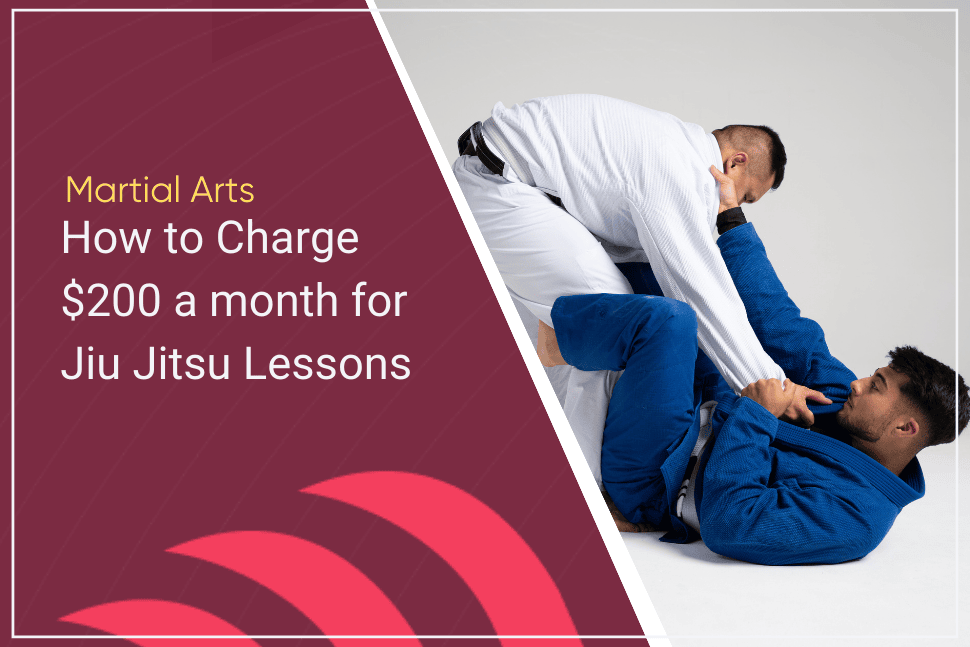By the time you’re ready to open the doors of your new gym business, you, your family, and employees will have lived and breathed the business for months. Now your challenge is to get your message out to the world. Unless you go about your gym marketing efforts methodically and strategically, your business will struggle to make traction. In this article, we lay out 3 key marketing steps designed to get enthusiastic customers flocking through your door.
In this article, we’ll be exploring these 3 marketing concepts in detail:
- Branding Your Business
- Defining Your USP
- Social Media Marketing
Branding Your Business
As a brand new, one-person business you may find it a little strange to be talking about building a brand right off the bat. Most people associate branding with massive corporations like Amazon or Coca-Cola. But branding isn’t just for the big players. Establishing a brand for your unique gymnastics business is crucial if you are to establish yourself as a viable, professional service provider
Brand design is a lot more than a name and a logo. Your name and logo, though important, are just two parts of a brand ecosystem. Your brand is going to show up in a lot of places. We can call these your brand touchpoints. They include:
- your website
- your email
- your digital marketing
- your social media
- your videos
- your print marketing
Your brand must show up in a consistent way across all of these brand touchpoints. There are four elements of a brand design ecosystem that will make sure that your brand is complete and consistent. Let’s take a look at them:
Name
A great name can help your business get noticed. In fact, according to Igor International, one of the world’s top naming companies, the purpose of a business name is to “help your company to stand out and provide a canvas for you to paint your own meaning on.”
When you are evaluating your business name, you must be as objective as possible. Subjective and personal reactions have no bearing on whether the name will work in the marketplace. These are the evaluation criteria that you should be using. No name could include all of these, but the more the better:
- Appearance – how does the name look as a visual signifier; how will it look on a logo, a Facebook ad, or on your homepage website?
- Distinctive – does it stand out and is it memorable?
- Depth – are there layers to its meaning and associations?
- Energy – does it feel fresh, vibrant, and full of life? Does it have a buzz?
- Humanity – does it have humanness or is it cold sterile and unemotional (think Apple compared with IBM)
- Positioning – how relevant is the name to the positioning of the brand, service, and market being served?
- Sound – how does the name sound and how easily is it spoken? Is it a fun word to say like Fizzle?
- Curiosity – is there an aspect of curiosity to the name that lingers in the mind and draws attention?
Logo
Your logo is the face of your business. It is probably going to be the first impression that a person gets of the business. The simple image that is your logo can either direct a person towards or away from doing business with you. Your logo is also a representation of what your business stands for.
There are 6 basic logo types, with each of them emphasizing fonts, colors, and styles differently.
- Lettermark or monogram logos – think HBO or KFC
- Wordmarks – these are similar to a letter mark but they focus on the name alone – examples are Disney and Microsoft.
- Picture of Logo symbols – such as Facebook or Twitter – these are used by established companies who are instantly recognizable
- Abstract logos – these can be uniquely unique to your brand. Think of the Pepsi logo – it looks like a multi-colored beach ball, which doesn’t seem to have much to do with their product but still, it is instantly recognizable
- Mascot Logos – these are recognizable and fun – think Pringles or Mr. Peanut
- Combination mark logos – these pair a name and image – famous examples are Adidas and Domino’s Pizza.
Fonts
The majority of the marketing exposure that your potential client gets to your business will be through the written word. So, while choosing your font might seem like a small thing, it is actually a critical factor in creating a winning brand.
A good brand font needs to be:
- legible
- unique
- memorable
- multiplatform oriented
- able to communicate brand personality
Tone of Voice
When it comes to the copy of your marketing content, you need your brand tone of voice to remain consistent. Is it going to be informal, jokey, funny, serious, or formal?
Pull all of the elements of your branding together into a Brand Guidelines document. Use them as a constant source of reference for everything you do brandwise. And when you work with a brand service provider, such as a website developer or a blog writer, you want to be able to give them your brand guidelines so that they know exactly what your brand looks and feels like.
Defining Your USP
USP stands for unique selling point. Your USP is the thing that sets you apart from all of your competitors so that you can stand out from the crowd. If you have an excellent USP, your clients will be naturally drawn to you. When you focus on just one unique selling point in your marketing, you will come to be seen as an expert in that area.
One way is by focusing on a specific market segment. So rather than being a gym for all comers, you market yourself as a specialist trainer to a specific market segment, such as pre-teens or acrobatics.
To engender your prospective clients with the emotional response that will make them want to work with you, you need to understand the motives behind why they will, ultimately, join your gym.
To do that, you need to dig beyond the surface and think about what you are really offering to your clients. Howard Shultz, the founder of Starbucks, once told his employees . . . “We’re not in the coffee business serving people, we’re in the people business, serving coffee.”
That is a powerful statement.
Think for a moment if a holiday company realized that they are selling dreams rather than hotel beds. Or if booksellers realized that they were selling escapes and not just words. Or if restaurateurs realized they were selling memories and not just food. Think how that would change the way they marketed their services.
The point is that we need to think about the second level of benefit. The first level of benefit is gymnastic skill development – But what is the second level of benefit beyond that? For the teenage boy, it could be to gain respect? Or for the senior, it might be to regain a sense of freedom? Or for the pregnant woman to have a sense of control over what’s going on with her body.
Once you have identified the deeper, psychological reasons that people are wanting to join your gym, you will be able to use that to position yourself uniquely to meet that need.
Social Media Marketing
Okay, let’s get something straight from the start. Your gymnastics business must have a visible and vibrant social media presence. Even if you’re a person who hates social media and everything it stands for, you will not be able to survive in today’s competitive business environment without embracing it.
By using online channels, more and more people will get to know that your brand exists. Do a great job at getting people talking and sharing annually and find others will happily follow their lead and you will be benefiting from social influence.
Just consider some of the benefits of using social media …
- It works with any budget, including no budget at all
- You have a huge potential audience
- You can engage easily with your customers
- You have a visible online presence
- You receive real-time feedback
- You can leverage from your most enthusiastic supporters
Let’s now consider the 3 most effective social media platforms to market your gymnastics business.
Instagram has more than a billion regular users. 71% of them are under the age of 35 and the average user spends 53 minutes on the platform every day. Around 75% of US businesses are now using Instagram as part of their marketing plan. You need to be one of them. Here are ten tips to help you make the most of marketing your gym business on Instagram:
- Make your profile picture enticing – your profile picture will create a first impression of you. Prospective clients will either engage or disengage based on that first impression. Your profile picture should have a front-facing angle, use a soft light source and show you with an alert expression and the hint of a smile on your face.
- Remain consistent with the colors that you use on Instagram.
- Post top-quality photos – ideally you should post a minimum of one photo per day. Include action shots of you training your clients as well as before and after pics and exercise demonstration photos.
- Use hashtags wisely – Instagram posts with hashtags are 12.6% more engaging than those without them. Try to include up to 7 hashtags with each. Make use of Instagram’s built-in hashtags feature to see which hashtags are trending in the fitness industry.
- Share valuable, engaging content – research tells us that Instagram users prefer to watch videos 4 times more than looking at images or reading articles. They also share infographics 3 times more than photos. Instagram stories in the form of live-streamed videos are a great way to get your content shared, especially if they revolve around your clients achieving their goals.
- Improve your share-ability – create content that can be shared across your other platforms.
- As with any platform, your goal on Instagram is to get followers likes and comments. Here are the best-proven ways to get more followers . . .
- Have a theme -the theme should be driven by your content strategy but you can break your themes down a little. For instance, your theme for the month of May could be heart health month. Your theme within that could be healthy fruit and vegetables, which easily lend themselves to great image creation and messages.
- Keep it visual – take the best shots, add the best filters and create something special.
- Add a description that’s worth it – this is your space to talk about the image, so tell a story and add some hashtags.
- Post consistently – do a daily where you can but whatever schedule you choose, stick to it.
Snapchat
Snapchat was officially released in 2011 and quickly gained a foothold. Within a year, users were sending over a billion photos and Snapchat as part of the mainstream social media landscape. Today it has more than 500 million stories added every day. 60% of all smartphone users are on Snapchat and it has a higher video viewer rate than Facebook.
Here are 7 proven ways to use Snapchat to successfully market your gymnastics business . . .
- Broadcast short testimonials – ask your clients to go live on Snapchat to provide a short testimonial for you. Have them be specific on one aspect of your training service that they truly love. Be sure to download the snap so that you can use it on your website and across your other platforms.
- Share snaps of you working out – focus on just one move and do two videos. In the first provide instruction on the benefits of the exercise on how to do it and in the second actually demonstrate yourself doing the movement.
- Provide behind-the-scenes access to your life – create videos of your daily routine, how you managed to fit in your workouts around your clients and how you managed to eat healthily despite a hectic schedule.
- Share snippets of group training sessions – just get permission from all involved before posting.
- Showcase new products and equipment – whether as a new pair of gym rings or a piece of home fitness equipment, expose it and give your opinion.
- Show the personal you – create content about what you do when you’re not personal training, showing the human side of your business.
- Cross-promote – network with related businesses that are a natural fit and do cross-promotional work – it could be a food delivery service, a masseur, chiropractor, or any other service industry that naturally melds with what you do.
Email marketing involves sending a message directly to the consumer’s inbox. It’s delivered – they don’t need to go anywhere to find it. If done the right way, it can get right in front of the eyeballs that you need to see it. In this sense, it is the most direct method of communication in the marketplace.
When it comes to your content here are a few guidelines from marketing experts that will make it more effective . . .
- Clear Call to Action – Think about what you want the customer to do. If they need to take action, make it obvious – for example, you can insert instructions such as ‘Click Here!’
- Use short sentences and paragraphs – you want your reader to keep reading, not fall asleep!
- Use white space – this makes it easy to read and draws the eye to different content.
- Add hyperlinks – Link your email back to your website for more information
- Use spacing and horizontal lines to separate content areas
- Use web-safe fonts only
- Use social sharing and ‘Forward to a Friend’ links to increase open rates and grow your database.
When it comes to what you will include in the content of your email, here are some suggestions that work well for personal trainers . . .
- Training Tips and Advice
- Gymnastics Myth Busting
- Nutritional Tips
- Motivational Content all
- Testimonials
- Gym Industry News
- Gymnastics research
Email marketing is best integrated with your gymnastics management software, so you can combine it with your member management and billing features. At Gymdesk, we have all these features built into the software and fully integrated with one another.
Summary
In this article, we’ve gone in-depth on the 3 pillars of your gym marketing plan:
- Branding Your Business
- Defining Your USP
- Social Media Marketing
Use the information presented here as a template to get your message out there consistently and uniformly and the people will come – it’s as inevitable as night following day!
 Gym Owner Statistics: The State of Gyms, Member Trends, and Usage Data
Gym Owner Statistics: The State of Gyms, Member Trends, and Usage Data




 EN (English)
EN (English)
 JA (日本語)
JA (日本語)